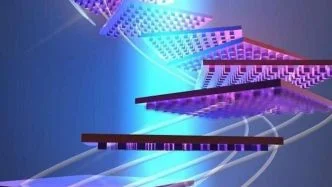- Researchers build the first-of-its-kind device to generate static electricity from falling snow.
- It can be integrated with solar panels to obtain continuous power supply in snowy conditions.
- It also functions as a self-powered sensor to monitor wind direction and snowfall rate.
In snowfall areas, it’s quite hard to access green, renewable power sources, such as wind turbines and solar energy. Extreme weather conditions like short daylight periods, prolonged cloud cover, sub-zero temperatures, and heavy snow accumulation, can affect energy generation.
Several alternate techniques exploit such local weather conditions and provide a more viable energy generation strategy. However, usual meteorological sensors and weather stations have many limitations, for instance, their ability to work in such extreme environments, complex design, cost and need for a sustainable power source to function effectively.
Recently, researchers at the University of California, Los Angeles, developed a new device capable of generating electricity from falling snow. It is an inexpensive first-of-its-kind device that is flexible like a plastic sheet.
Snow-Based Triboelectric Nanogenerator
This clever device can examine the amount of snow falling, the direction of snow, as well as the speed of the wind. The nanogenerator creates charge through static electricity, and generates energy via the exchange of electrons.
When one material interacts with another, it captures electrons while the other one gives up electrons. This is how one can separate the charges and generate static electricity.
In this case, snow contains positive charges and ready to give up electrons. The research team used a synthetic rubber-like material (silicone) which consists of oxygen and silicon atoms, along with hydrogen, carbon and other elements. Since this material contains negative charges, when it comes in contact with snow, it creates a charge that is captured by the device to produce electricity.
Reference: Science Direct | DOI:10.1016/j.nanoen.2019.03.032 | UCLA
This low-cost, 3D printed device is composed of a sheet of silicone and an electrode to capture the charge. It’s easy to fabricate due to the wide availability of silicone, which is extensively used in a broad range of products, from biomedical implants to electrical wire insulation.

For best performance, the material should be able to collect as many electrons as possible. Researchers tested various materials for this job and discovered that silicone generates more charge that other materials, such as Teflon and aluminum foils.
More specifically, the device can generate a power density of 0.2 mW/m2, and an open circuit voltage up to 8V. It can be integrated with conventional solar panels to obtain continuous power supply in snowy conditions.
Other Uses
The nanogenerator can accurately monitor winter sports like skiing and enhance athletes’ performance when jumping, running or walking. It can also identify parameters that cannot be detected with a smartwatch, such as the main movement patterns used in cross-country skiing.
Read: Solar Panels Can Now Follow The Sun To Capture More Energy
It could help next-generation of self-powered wearable devices better track athletes’ performances, and show whether they are marching, jumping, walking or running.


